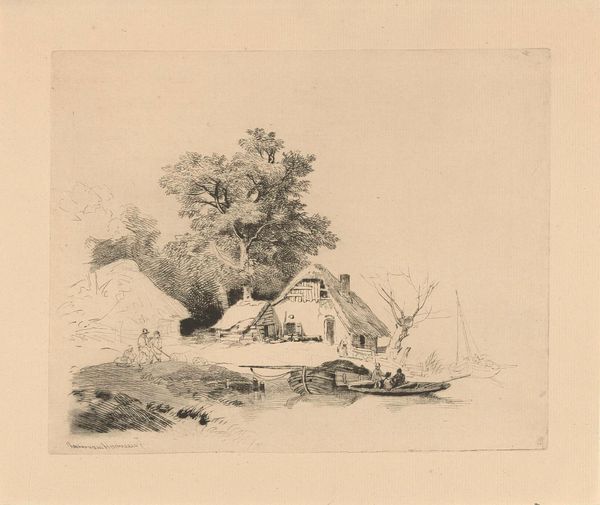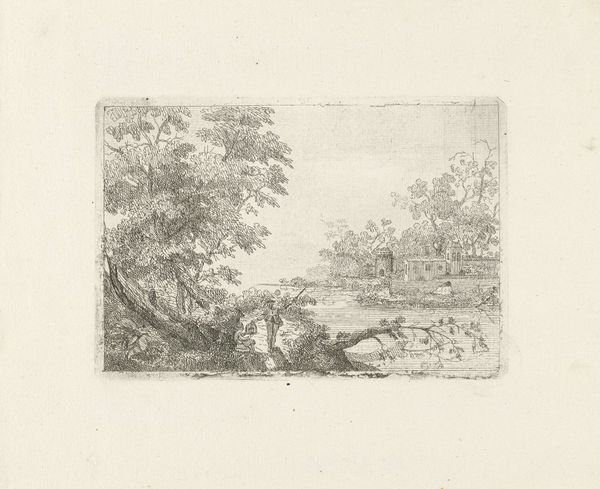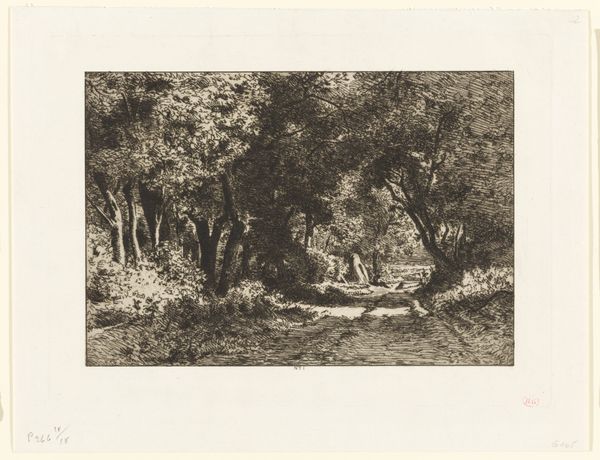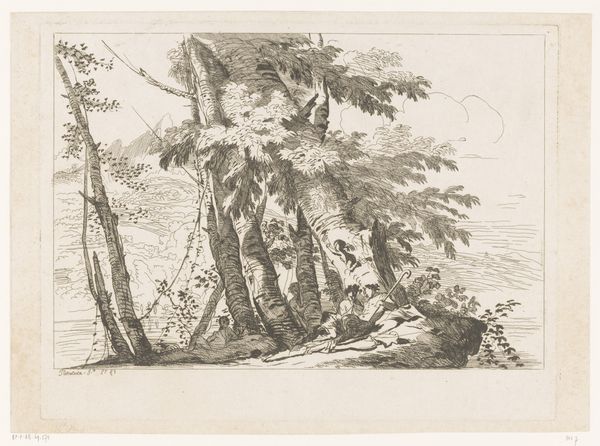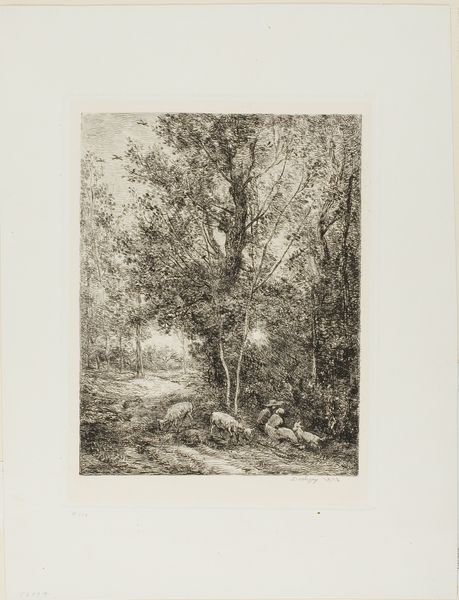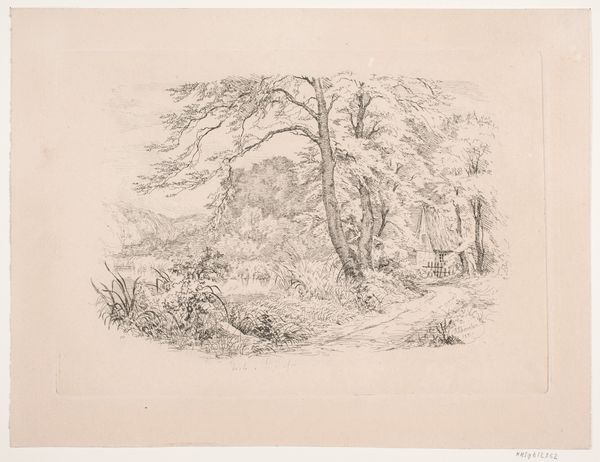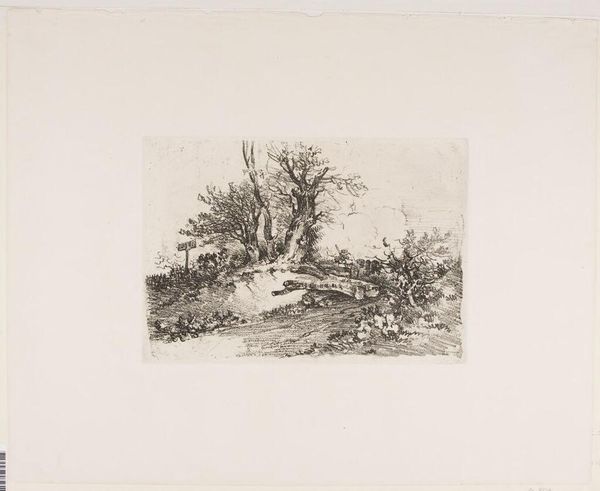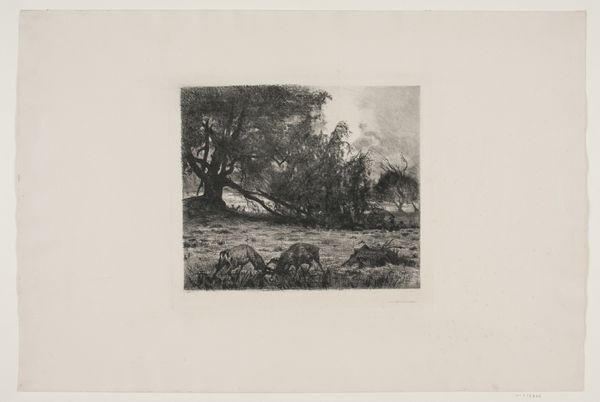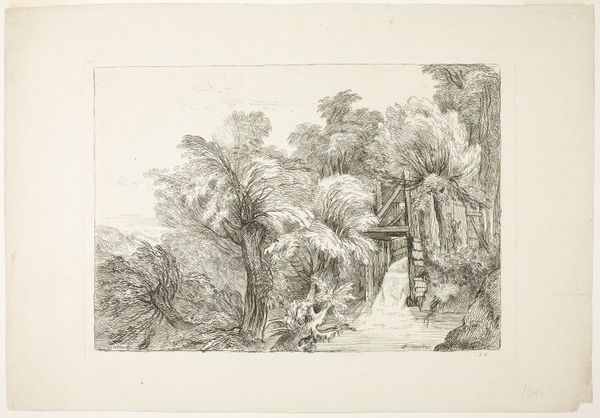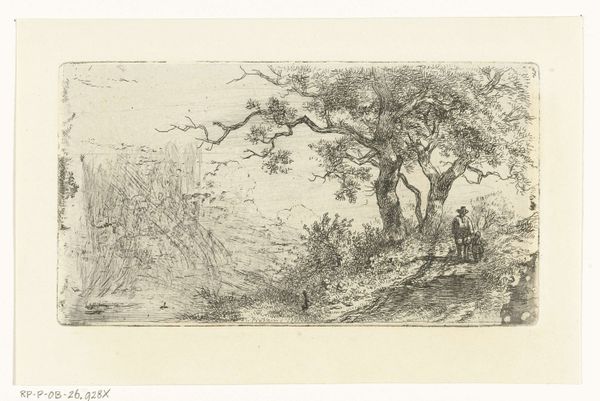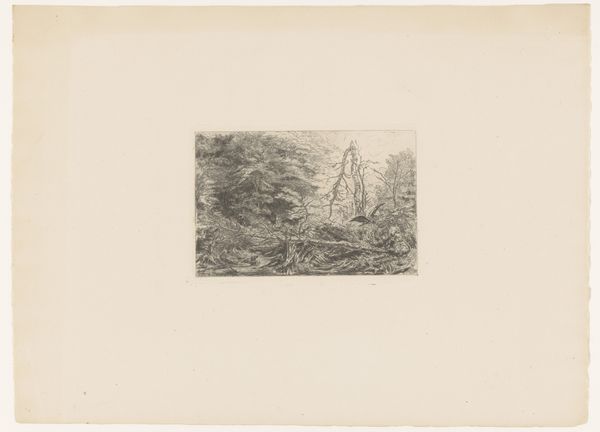
drawing, pencil
#
pencil drawn
#
tree
#
drawing
#
pencil sketch
#
landscape
#
pencil drawing
#
romanticism
#
pencil
#
pencil work
#
realism
Dimensions: height 173 mm, width 228 mm
Copyright: Rijks Museum: Open Domain
Curator: Here we have "Fallen Tree at the Edge of the Forest" by Pierre Louis Dubourcq, created in 1836. It’s a delicate pencil drawing, currently held here at the Rijksmuseum. Editor: A single glance whispers tales of stillness, of that quiet observation you only find while tramping in a forest. A meditation, almost. Do you feel it? Curator: Absolutely. Romanticism valued the individual's emotional experience of nature, and that is certainly present. Artists were finding beauty in the mundane, away from overly idealized landscapes. Dubourcq clearly spent time in front of this exact scene. Editor: It’s more than mere observation, though, isn't it? I’m thinking, why this tree? It lies prone, surrendering its stature back to the earth, to nature, back to the very plants sprouting up around it! I see death but also rebirth. The composition leads my eye on this cyclical journey. Curator: Well, in 19th-century landscape art, felled trees and overgrown foliage frequently served as memento mori, or reminders of mortality and the fleeting nature of existence. We have the detailed undergrowth that is really representative of Realism creeping into landscape at this time too, however. The precision in rendering texture and detail is astonishing. Editor: Astonishing is right! Notice the detail in the bark, so rough and detailed. It’s contrasted with the smoothness of other elements that provide, like, visual breathing room. And the subtle tonal gradations achieved with pencil? Remarkable. Gives the scene real depth. Curator: Absolutely. He seems invested in documenting nature objectively while imbuing it with emotional resonance, in a way representative of Romanticism. The tree serves almost as a monument in nature’s gallery. Editor: Right, and there’s this silent power too, which draws me into a conversation with the landscape itself. A question mark of mortality hanging over it. I find it profoundly calming, strangely, don't you? Curator: Calm yes. Dubourcq bridges a gap. He’s an unsung hero from an artistic period rife with exploration of art’s ability to mimic nature while finding ways for the artist's view to still feel deeply emotive. I appreciate his unique contribution. Editor: Me too. There’s something truly timeless here. Next time I'm feeling lost in the woods, perhaps I should stop to talk with a fallen tree myself.
Comments
No comments
Be the first to comment and join the conversation on the ultimate creative platform.
